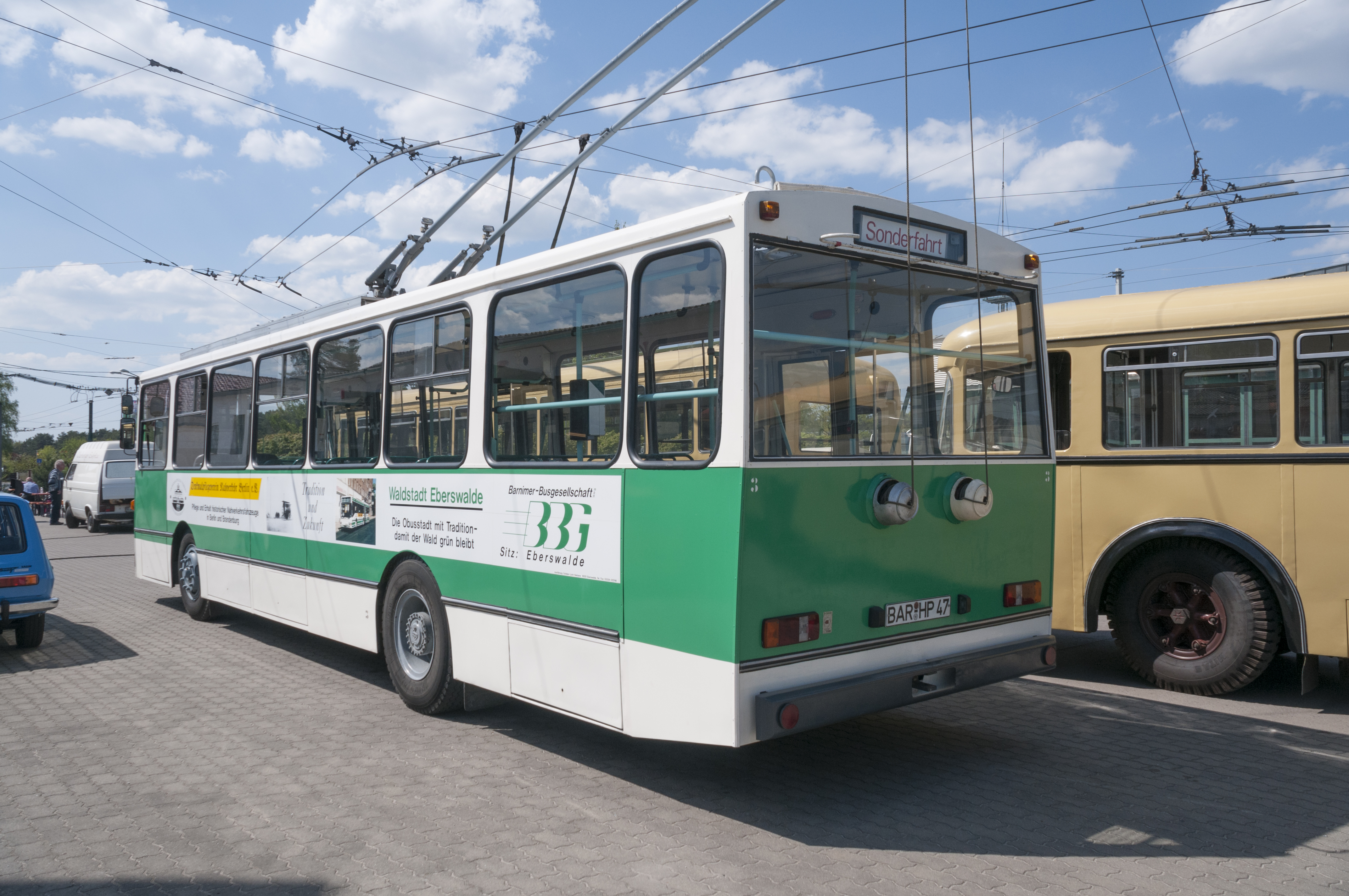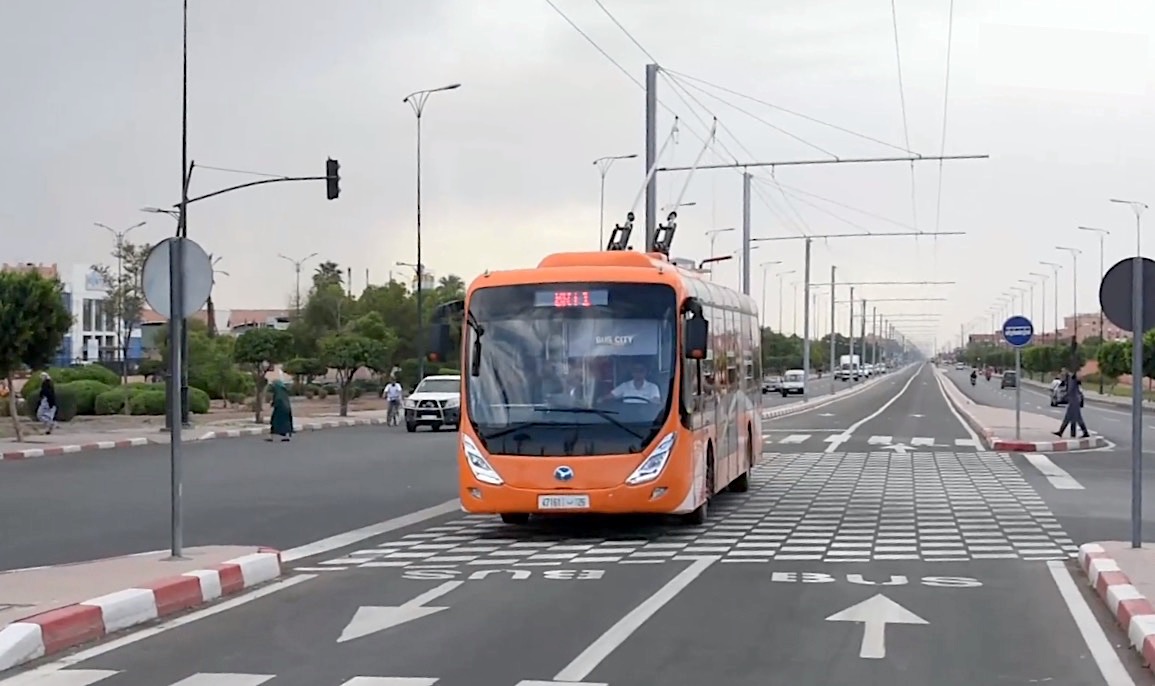|
Trolleybuses In Plovdiv
The Plovdiv trolleybus system ( bg, Пловдивски тролейбусен транспорт) was a part of the public transport network of the city and municipality of Plovdiv, the second most populous city in Bulgaria. Opened in December 1955, the system had waxed and waned in size over time. As of the beginning of 2012, it was made up of only one route. There are current disputes between the operator and the municipality regarding the validity of the trolleybus contract. Gradski Transport Plovdiv is still the operator of this type of transport, despite the numerous infractions of the contract since 2010. In October 2012, because the operator is a private company, the city lost the opportunity to acquire 65 mln lv EU funding for purchasing approximately 100 brand-new trolleybuses. The system was officially closed on 1 October 2012 although some trolleybuses continued operation for a few more weeks. Currently there is no trolleybus movement and the municipality has i ... [...More Info...] [...Related Items...] OR: [Wikipedia] [Google] [Baidu] |
Van Hool
Van Hool NV () is a Belgian family-owned coachbuilder and manufacturer of buses, coaches, trolleybuses, and trailers. Most of the buses and coaches are built entirely by Van Hool, with engines and axles sourced from Caterpillar, Cummins, DAF and MAN and gearboxes from ZF or Voith. Some production involves building bus and coach bodies on separate bus chassis from manufacturers such as Volvo and Scania. Worldwide, Van Hool employs 4,500 people and manufactures more than 1,700 buses and coaches (bodyworks and complete vehicles combined) and 5,000 trailers each year. It sells an average of 600 coaches annually in the United States. History The company was founded in 1947 by Bernard van Hool in Koningshooikt, near Lier, Belgium. In the early years, the company introduced serial production and exported their products all over Europe. Since the mid-1980s, the company has also been active on the North American market. On February 15, 1957, Van Hool signed a commercial agree ... [...More Info...] [...Related Items...] OR: [Wikipedia] [Google] [Baidu] |
Škoda 14Tr
The Škoda 14Tr is a Czech trolleybus that was produced from 1981 to 1998. Prototypes were built in 1972 and 1974. After the unsuccessful attempt to merge the Karosa ŠM 11 bus and the Škoda T 11 trolleybus and the cancelled Škoda 13Tr project, a new style of trolleybus was designed in the early 1970s, designated the 14Tr. Development was halted because of plans to replace trolleybuses by diesel buses, but the 1973 oil crisis led to a re-evaluation and work on the 14Tr resumed. Description The 14Tr is a two-axle trolleybus with unibody construction. Its structure consists of mutually welded elements: the frame, side walls, roof and ends. Each component is welded together from steel shapes and castings. The body is covered with a steel skin; the section below the windows is thermally insulated and soundproofed. The interior is surfaces with plastic paneling. Domestic buses have three twin-leaf folding doors on the right side, while export units only have two. Transverse pass ... [...More Info...] [...Related Items...] OR: [Wikipedia] [Google] [Baidu] |
List Of Trolleybus Systems
This is a list of cities where trolleybuses operate, or operated in the past, as part of the public transport system. The original list has been divided to improve user-friendliness and to reduce article size. Separate lists—separate articles in Wikipedia—have been made for the following countries: *Americas **Brazil **Canada **United States *Europe (''Note:'' countries not listed here are included in ''this'' article; see ''Contents'' table below) **France **Germany **Italy **Russia **Spain ** Switzerland **Ukraine **United Kingdom This page also provides references that are applicable to all parts of the complete list. Bold typeface for a location city indicates an existing trolleybus system, currently in operation (temporary suspensions not counted), or a new system currently under construction. Africa Algeria Egypt Morocco South Africa Tunisia Americas Argentina Brazil Canada Chile Colombia Cuba *Note: Tests began 18 September 1949 alo ... [...More Info...] [...Related Items...] OR: [Wikipedia] [Google] [Baidu] |
Plovdiv Central Railway Station
Plovdiv Central Railway Station ( bg, Централна железопътна гара Пловдив, translit=Tsentralna zhelezopatna gara Plovdiv) is the main railway station serving the city and municipality of Plovdiv, the second most populous city in Bulgaria. History Opened in the 1870s, the station is located on the Lyubimets– Belovo railway, which links Sofia, capital of Bulgaria, with Istanbul, largest city of Turkey. It was built by Turkish architect Mimar Kemaleddin Bey. There are 11 tracks in the station. The current Art Nouveau building, designed by the Italian architect professor Mariano Pernigoni, was completed in 1908.Raychevski, G., Plovdiv Encyclopedia, Janet 45, 2009, p.340 (in Bulgarian) Gallery See also * Bulgarian State Railways The Bulgarian State Railways ( bg, Български държавни железници, translit=Balgarski darzhavni zheleznitsi, abbreviated as БДЖ, BDZ or BDŽ) are Bulgaria's state railway company and the largest ... [...More Info...] [...Related Items...] OR: [Wikipedia] [Google] [Baidu] |
Trolleybuses In St
A trolleybus (also known as trolley bus, trolley coach, trackless trolley, trackless tramin the 1910s and 1920sJoyce, J.; King, J. S.; and Newman, A. G. (1986). ''British Trolleybus Systems'', pp. 9, 12. London: Ian Allan Publishing. .or trolleyDunbar, Charles S. (1967). ''Buses, Trolleys & Trams''. Paul Hamlyn Ltd. (UK). Republished 2004 with or 9780753709702.) is an electric bus that draws power from dual overhead wires (generally suspended from roadside posts) using spring-loaded trolley poles. Two wires, and two trolley poles, are required to complete the electrical circuit. This differs from a tram or streetcar, which normally uses the track as the return path, needing only one wire and one pole (or pantograph). They are also distinct from other kinds of electric buses, which usually rely on batteries. Power is most commonly supplied as 600- volt direct current, but there are exceptions. Currently, around 300 trolleybus systems are in operation, in cities and tow ... [...More Info...] [...Related Items...] OR: [Wikipedia] [Google] [Baidu] |
Carrosserie Hess
Carrosserie HESS AG is a bus, trolleybus and commercial vehicle manufacturer based in Bellach, Switzerland. Their products can be found operating in several countries, including the United States and Canada. History The company was founded in 1882, when Heinrich Hess set up business in Solothurn to build customised car bodies. The company first began building buses in 1919, and production reverted to aluminium products in 1933. It produced its first trolleybuses in 1940 for the Swiss cities of Basel and Biel/Bienne. In 1961, it commenced building of articulated vehicles, some of which were supplied to operators in the United States and Canada in 1975. The company soon began to expand, and businesses were set up in Portugal and Australia in 1957 and 1978 respectively. The U.S. business was set up in 1996. The company began production of low-floor buses and trolleybuses in 1991, and in 2003 built its first double-articulated trolleybuses. Products Buses *N UB 2-2: A low-floor, tw ... [...More Info...] [...Related Items...] OR: [Wikipedia] [Google] [Baidu] |
Saurer
Adolph Saurer AG was a Swiss manufacturer of embroidery and textile machines, trucks and buses under the Saurer and Berna (beginning in 1929) brand names. Based in Arbon, Switzerland, the firm was active between 1903 and 1982. Their vehicles were widely used across mainland Europe, particularly in the interwar period. History In 1853 Franz Saurer (1806–1882) from Veringenstadt, Germany established an iron foundry for household goods near the Swiss town of Sankt Gallen. Eastern Switzerland was a center for both embroidery and embroidery machine development. About 1850 Franz Rittmeyer built the first practical, satin stitch embroidery machine, known as the '' Handstickmaschine''. Several Swiss companies began building and improving these machines, and their heyday lasted from roughly 1865 until the end of the century. Two of Franz Saurer's sons – Anton and Adolf - were aware of this invention, saw an opportunity, and began building hand embroidery machines in their father's ... [...More Info...] [...Related Items...] OR: [Wikipedia] [Google] [Baidu] |
Trolleybuses In Ghent
A trolleybus (also known as trolley bus, trolley coach, trackless trolley, trackless tramin the 1910s and 1920sJoyce, J.; King, J. S.; and Newman, A. G. (1986). ''British Trolleybus Systems'', pp. 9, 12. London: Ian Allan Publishing. .or trolleyDunbar, Charles S. (1967). ''Buses, Trolleys & Trams''. Paul Hamlyn Ltd. (UK). Republished 2004 with or 9780753709702.) is an electric bus that draws power from dual overhead wires (generally suspended from roadside posts) using spring-loaded trolley poles. Two wires, and two trolley poles, are required to complete the electrical circuit. This differs from a tram or streetcar, which normally uses the track as the return path, needing only one wire and one pole (or pantograph). They are also distinct from other kinds of electric buses, which usually rely on batteries. Power is most commonly supplied as 600- volt direct current, but there are exceptions. Currently, around 300 trolleybus systems are in operation, in cities and tow ... [...More Info...] [...Related Items...] OR: [Wikipedia] [Google] [Baidu] |


